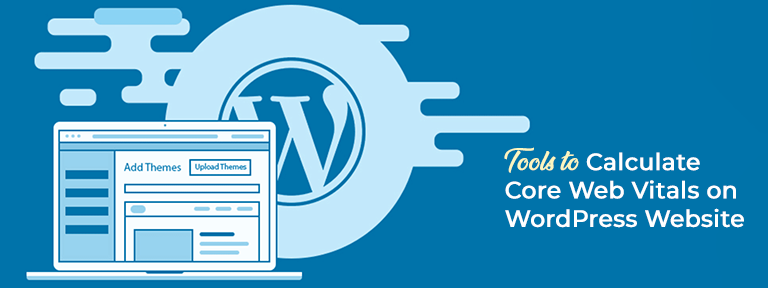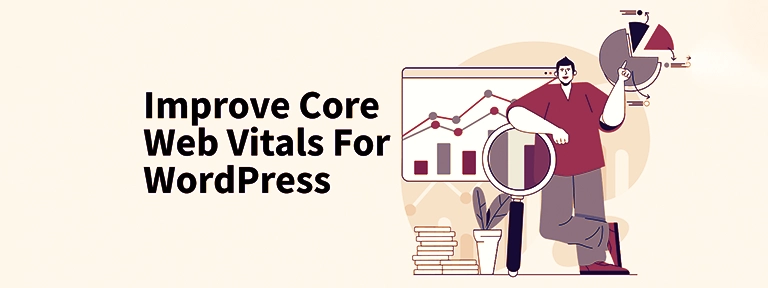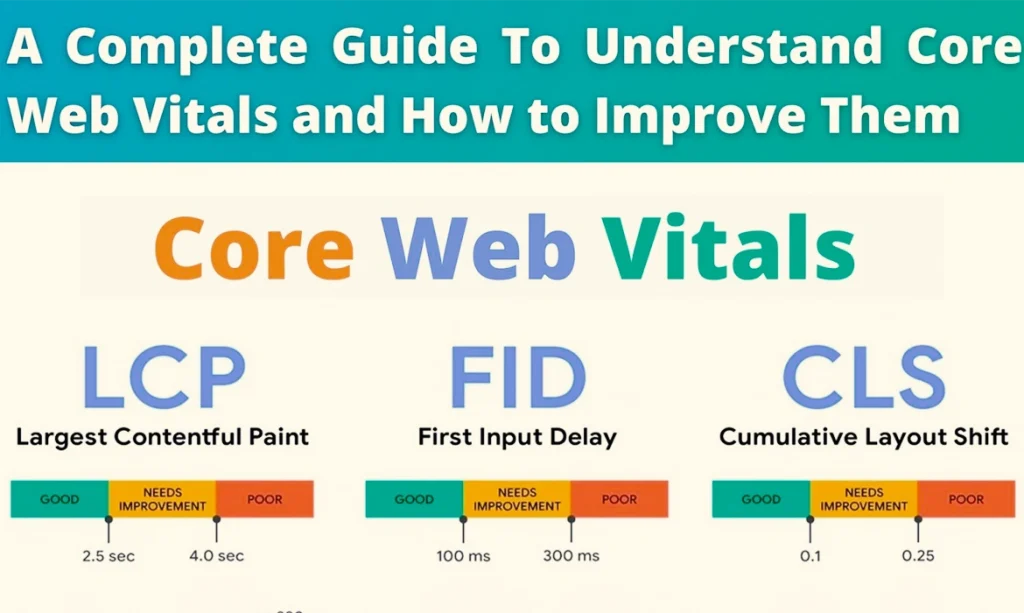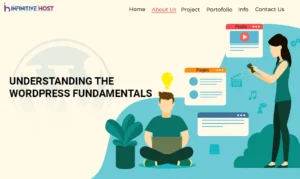Google uses a limited set of criteria to gauge and evaluate websites. Among the latest and most vital factors influencing Page Experience are Core Web Vitals. Neglecting to optimize your website for these metrics could potentially harm your Search Engine Optimization (SEO) efforts and the overall User Experience (UX).
The encouraging news is that once you grasp the concept of Core Web Vitals and know how to assess them, you can proactively enhance them. This proactive approach ensures that you’re delivering a robust user experience and adhering to Google’s criteria, ultimately boosting your search engine visibility.
Table of Contents
What do you mean by Google Core Web Vitals?

Google’s Core Web Vitals represent a Google-led initiative centered on a collection of website performance metrics aimed at evaluating and enhancing user experience. These scores zero in on the overall performance of a website and its ability to provide the best user experience, rather than merely emphasizing the total website loading time.
Even if your website loads quickly, it might not function optimally or appear promptly to users, leading to an unfavorable user experience. Users are primarily concerned with the speed at which they can interact with a web page, and this is precisely what the Core Web Vitals metrics assess.
To accomplish this, Google identifies three Core Web Vitals:
- Largest Contentful Paint (LCP).
- First Input Delay (FID)
- Cumulative Layout Shift (CLS)
For better user experience these metrics are the most important ones for your website.
These names might sound a bit complex or technical, but don’t be concerned! These are easy to understand, and you will get proper information in this blog, You’ll learn the meaning and importance of each Core Web Vital, empowering you to effectively apply them to WordPress websites.
Largest Contentful Paint (LCP)
Largest Contentful Paint (LCP) assesses the speed at which the primary content, typically the hero section or prominent image on your website, becomes visible to users. This central content, also known as the LCP element, varies from site to site, including distinctions between mobile and desktop versions. LCP elements encompass images, content, or descriptions.
Imagine visiting a website and noticing that the main image, often a hero section, fails to load. As a visitor, your likely reaction would be to leave and seek an alternative website. This illustrates the close connection between the Largest Contentful Paint metric and user experience, underscoring its importance among the Core Web Vitals for WordPress sites.
Google has established specific thresholds for LCP times:
- Good: Less than or equal to 2.5 seconds
- Needs Improvement: Equal to less than 4.0 seconds
- Poor: More than 4.0 seconds.
First Input Delay (FID)
First Input Delay (FID) gauges the duration between user interaction and event processing. In simpler terms, FID represents the time from a user clicking on a link to their browser initiating event processing. User interactions encompass actions like clicking on links, Call-To-Action (CTA) buttons, or submitting forms.
Consider when a user fills out a form and clicks the submit button. How swiftly does your website process this interaction and successfully submit the form? This precisely defines what the First Input Delay (FID) measures: the speed at which your website handles user interactions.
First Input Delay is heavily influenced by JavaScript, making optimization of the FID metric for Core Web Vitals in WordPress sites a complex task.
Google categorizes First Input Delay (FID) times as follows:
- Good: Equal to or less than 100 ms
- Needs Improvement: 300 ms or less
- Poor: More than 300 ms.
Cumulative Layout Shift (CLS)
Have you ever encountered a website that suddenly alters its layout or fonts while you’re in the middle of reading? Or just as you’re about to click on something, it shifts position? Such changes can be frustrating for users, resulting in a poor user experience.
Cumulative Layout Shift (CLS) is a crucial metric among the Core Web Vitals for WordPress websites. It measures the frequency of layout shifts that users commonly encounter on various websites.
Ads often contribute to CLS issues because they come in various sizes with unspecified dimensions. An example is a news website where the article content changes and the site continuously loads ads, causing users to lose their place while reading.
Google sets the following scores for Cumulative Layout Shift (CLS):
- Good: Equal to less than 0.1 seconds
- Needs Improvement: Equal to or less than 0.25 seconds
- Poor: More than 0.25 seconds.
Tools to Calculate Core Web Vitals on WordPress Website

Google offers well-known tools designed for assessing Core Web Vitals on WordPress websites. These tools are used to find out and fix user experience issues. The ones used to calculate Core Web Vitals are Lab tools and Field Tools.
You can see in the above image that all three metrics are measured by Google tools- LCP, FID, and CLS- apart from Chrome DevTools and Lighthouse.
Chrome DevTools and Lighthouse use Total Blocking Time (TBT) as a substitute for First Input Delay (FID). Introduced in 2020 as a Lighthouse Performance metric, TBT exclusively offers Lab Data, while FID relies solely on actual user data for measurement.
For monitoring Core Web Vitals on a WordPress website, consider the following five tools:
- Lighthouse
- PageSpeed Insights
- Search Console
- Web Vitals Extension
- Web.Dev
How to Evaluate Your Google Core Web Vitals Performance

When it comes to testing Core Web Vitals for WordPress websites, PageSpeed Insights emerges as the most straightforward solution. It requires only your website’s URL. Just input the URL and click the “Analyze” button.
Once PageSpeed Insights meticulously examines the URL, it presents the core web vitals data within the ‘Field Data’ section.
At the top, the field data indicates whether your page passes the Core Web Vital assessment or not. You can access all three Core Web Vitals scores. Your goal should be to improve these vital metrics while adhering to Google’s recommended scores:
- Largest Contentful Paint (LCP) – 2.5 seconds
- First Input Delay (FID) should be under 100 milliseconds.
- Cumulative Layout Shift (CLS) – Less than 0.1
Identifying the Largest Contentful Paint (LCP) Using Pagespeed Insights
The largest Contentful Paint (LCP) gauges how swiftly your website’s primary content becomes visible to users. To identify the LCP, navigate to the diagnostics section in the PageSpeed Insights tool and expand the “Largest Contentful Paint” element tab.
Here, you’ll pinpoint the largest contentful HTML element painted by Google.
It’s important to note that an HTML element present on the desktop version of your site may differ from the mobile version. Therefore, optimizing LCP time is crucial for both iterations of your website.
Identifying FID and TBT Using Pagespeed Insights
As a reminder, First Input Delay (FID) measures the duration between user interaction and event processing. You’ll find the FID time exclusively in the ‘Field Data’ section since FID relies on actual user data. PageSpeed Insights conducts a lab test, which means it cannot display the FID score. In the Lab Data section, you’ll encounter Total Blocking Time (TBT) as an alternative metric to First Input Delay (FID).
Total blocking time is directly related to FID. Improving TBT will lead to better FID performance.
Identifying CLS Elements Using Pagespeed Insights
To recap, Cumulative Layout Shift (CLS) is related to sudden changes in a website’s content during interactions, causing the layout to shift as new content loads.
Visit the “Avoid large layout shift” section within the Diagnostics area to identify the element responsible for these shifts, which impact your site’s score.
How to Access Comprehensive Google Core Web Vitals Data for Your Website

If you’re examining the root page of your site and wish to access Core Web Vitals data for all pages on your WordPress website, Click the ‘Show Origin Summary’ checkbox.
For more comprehensive and detailed Core Web Vitals reports for your WordPress site, consider the following options:
- Utilize the Lighthouse speed test available on the Web.dev Measure tool. Simply enter your URL and initiate the test by clicking the ‘Run Audit’ button. This will provide you with an extensive audit report on the Core Web Vitals performance of your WordPress website.
- Alternatively, you can perform a Lighthouse speed test using the built-in functionality within the Google Chrome browser. Follow these steps:
- Open your website in Chrome.
- Access the inspect element feature (right-click on the screen, then select “inspect”).
- Choose the Lighthouse option within the tabs.
- Click the ‘Generate Report’ button to initiate the test.
These methods will give you a comprehensive view of the Core Web Vital’s performance across your WordPress website.
The Essential Steps to Improving Your WordPress Web Vitals

Improving your Core Web Vitals in WordPress is achievable by implementing essential performance optimization techniques.
Let’s explore these strategies step by step.
Optimize Your WordPress Hosting
The cornerstone of your website’s performance lies in your WordPress hosting. While there are various technical and non-technical methods to enhance site performance, the quality of your hosting is paramount.
To maximize your efforts in business growth rather than getting bogged down by server complexities, investing in the best WordPress hosting is crucial. It not only saves valuable human resources and time but also delivers superior performance. WordPress hosting offers a range of essential features, including:
- Enhanced Speed
- Server-side Caching
- Improved Security
- Staging Environments
For instance, Cloudways provides WordPress hosting solutions equipped with valuable features such as a pre-installed Breeze cache plugin and Varnish cache on their platform. These elements play an important role in elevating your Core Web Vitals scores.
Improving Largest Contentful Paint (LCP) Score
The primary objective for users is to access valuable content quickly on their screens. The faster the content loads, the higher your LCP (Largest Contentful Paint) score will be. As previously discussed, you can identify the largest content element in the Diagnostics section of the PageSpeed Insights tool. Here, you’ll find the elements contributing to the LCP score.
If the largest element happens to be text, you can enhance the content’s performance by dividing it into smaller paragraphs and using headings for improved readability.
In cases where media files constitute the largest portion of the LCP score, consider converting larger images into smaller ones. Smaller image files load more swiftly, preventing prolonged loading times and excessive page size.
To optimize your images and increase your Core Web Vitals score for your WordPress website, consider these plugins:
- EWWW Image Optimizer
- ShortPixel Image Optimizer
- Imagify – Image Optimization & WebP Conversion
- WP Compress – Comprehensive Image Optimization
- Smush – Lazy Load, Optimize, and Compress Images
Implementing these plugins can significantly enhance your website’s image optimization, thereby contributing to improved Core Web Vitals performance.
Improving First Input Delay (FID) Score
The most effective strategy for enhancing FID (First Input Delay) scores is to opt for managed WordPress hosting. Most managed WordPress hosting platforms come equipped with built-in cache settings designed to speed up event processing.
Another straightforward method to boost your FID score involves implementing the Deferred JavaScript technique on your WordPress website. This technique accelerates the display of web pages without the need to wait for JavaScript to load. You can achieve this by utilizing cache plugins that offer Deferred JavaScript options.
In this article, we’ll utilize the Breeze Cache plugin, which is available to all WordPress users at no cost. After installing and activating the plugin, navigate to WordPress Settings > Breeze. Within the Advanced Options tab, you’ll find the ‘Move JS files to footer’ and ‘JS files with deferred loading’ options. Enter the URL of the JS file, then click the Save Changes button to apply your modifications.
By implementing these changes, your site will no longer be required to await JavaScript loading, resulting in an improved First Input Delay (FID) score. This optimization will contribute positively to your WordPress website’s Core Web Vitals performance.
Improving Cumulative Layout Shift (CLS) Score
Cumulative Layout Shift (CLS) pertains to abrupt alterations in content that can displace other elements on the screen.
To address CLS issues effectively, it’s essential to identify the elements causing these layout shifts. You can perform this analysis in the Diagnostics section of the PageSpeed Insights tool, which pinpoints elements requiring attention to enhance Core Web Vitals for your WordPress website.
Images with improper dimensions, embedded videos, and advertisements are frequently the main offenders behind a poor CLS score. To mitigate these issues, ensure that both images and video elements incorporate width and height size attributes.
To verify the presence of size attributes on images, you can inspect them by right-clicking on your browser screen. Clicking on various page elements to access their source code allows you to examine all images and confirm whether they possess the necessary size attributes or not.
Eliminate Render Blocking Elements
Render-blocking elements encompass static files like HTML, CSS, and JavaScript files, pivotal for rendering web pages. These files often contain scripts that can block visitors from accessing content.
The Page Speed Insights tool is adept at recognizing these render-blocking elements. Typically, such elements are generated from various sources, including JavaScript and CSS files associated with WordPress plugins and third-party tools like Google Analytics. Their presence can adversely impact both the overall Core Web Vitals of WordPress websites and the user experience.
To minimize render-blocking scripts, consider these best practices:
- Minify JavaScript and CSS: Remove superfluous white spaces and unnecessary comments from your code.
- Concatenate JavaScript and CSS: Combine multiple JavaScript files into a single primary file, and do the same for CSS files.
- Defer JavaScript Loading: Instruct JavaScript files to wait until all other page elements are ready before loading.
Several plugins can assist in eliminating these render-blocking elements, including:
- Breeze By Cloudways
- WP Rocket
- Autoptimize
To eliminate render-blocking elements using the Breeze plugin, follow these steps:
- Install and activate the Breeze Cache plugin.
- Navigate to WordPress settings and click on Breeze.
- In the Basic Options tab, enable HTML, CSS, and JavaScript minification, then save the settings.
- After implementing these changes, conduct further testing to assess improvements in Core Web Vitals for your WordPress site.
For deferred JavaScript loading, refer to the ‘Improving First Input Delay (FID) Score’ section outlined earlier in this article.
Use a Content Delivery Network (CDN)
A Content Delivery Network (CDN) empowers users to access website files such as images and scripts from servers that are geographically closer to them. This not only enhances loading speed but also alleviates the server load on your site. CDNs constitute a network of servers distributed worldwide, and various third-party CDN services cater to websites.
Let’s explore a selection of third-party CDN providers:
- Cloudflare CDN
- KeyCDN
- Amazon CloudFront
- CDN77
For Cloudways users, there’s a valuable opportunity to leverage Cloudways’ collaboration with Cloudflare. You can activate the Cloudflare Enterprise CDN add-on, which extends Enterprise-level CDN capabilities to your website.
Wrapping Up!
Optimizing Core Web Vitals is a critical endeavor for website owners and developers alike. These performance metrics not only impact your search engine rankings but also directly influence the user experience.
Throughout this step-by-step guide, we’ve explored a range of strategies and techniques to boost your Core Web Vitals, from improving Largest Contentful Paint (LCP) and First Input Delay (FID) to tackling Cumulative Layout Shift (CLS) and eliminating render-blocking elements.
Remember that a fast, responsive, and visually stable website not only keeps visitors engaged but also sets the stage for your online success. By adopting the best practices, you’re well on your way to achieving exceptional Core Web Vitals scores and ensuring a seamless browsing experience for your audience. So, roll up your sleeves, dive into optimization, and watch your website flourish in both performance and user satisfaction.
Also Read:- 9 Tips To Boost Your Core Web Vitals In WordPress









